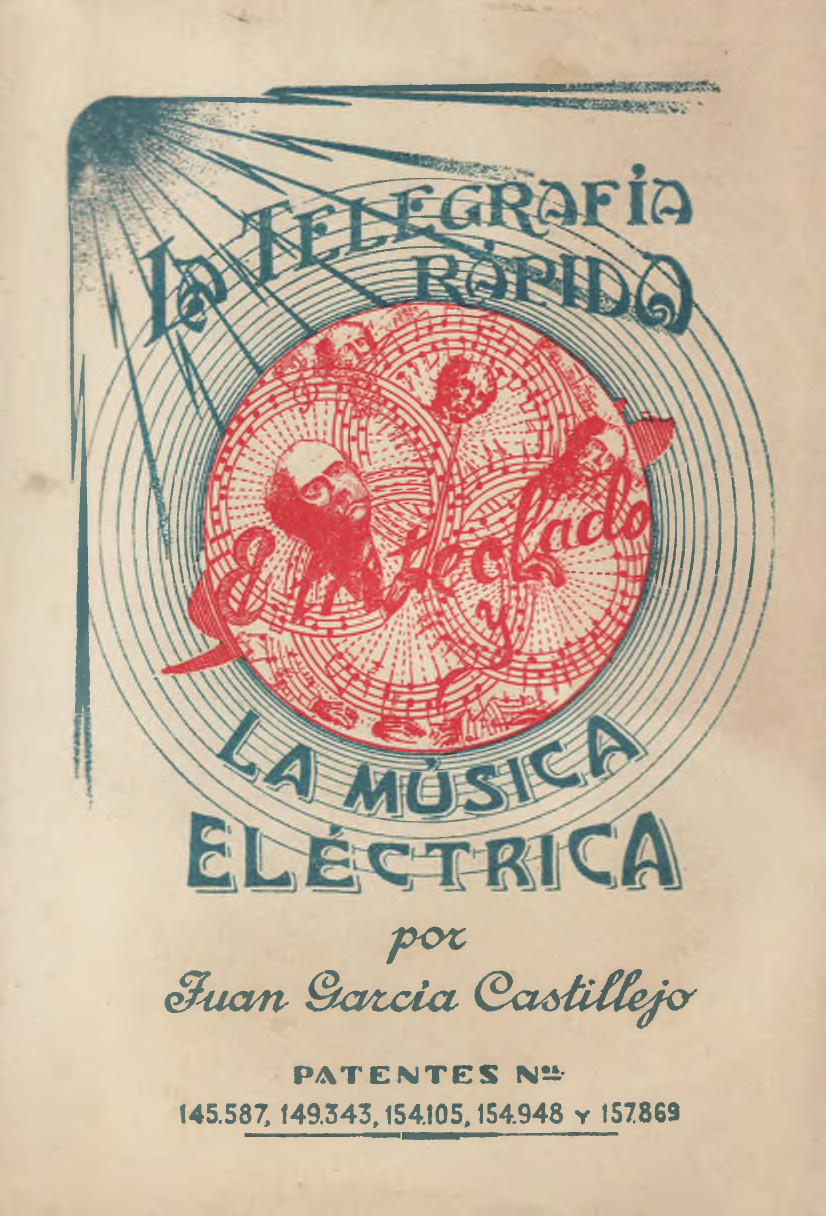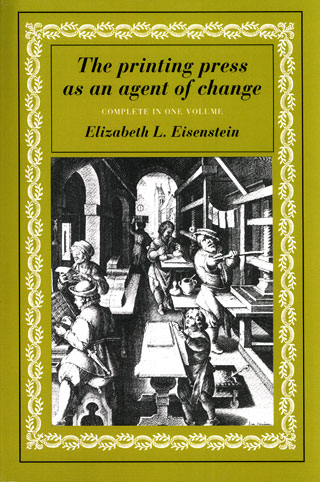Juan García Castillejo: Fast Telegraphy, the Trikeyboard and Electric Music (1944) [Spanish]
Filed under book | Tags: · electricity, library, music, sound, speech, telegraphy, typewriter

In this curious book, a Spanish priest proposes to combine the developments in telegraphy, teleprinter keyboards, typewriters and “electric music”. He describes how in the 1930s he built and perfected an ”electro-composition device”, equipped with lamps, transformers, capacitors, resistors, dozens of speakers and several engines.
He intended to cause the perforations in the telegraphic tape to be automatically selected by different engines that would trigger the various sound tracks recorded, and thus cause each of the “books on the perforated tape” to become an “audio book”. The purpose behind this idea was to enable the future creation of “spoken libraries” and “speech archives” in which the item being searched for could be instantly found. He performed practical experiments by means of a radio station where he managed to make the radio transmitter “speak automatically”, repeatedly broadcasting random announcements without anyone being present. He also intended this “talking device” to become an electric orchestra that composed “a music of chance configurations that was subjected to a number of panels governing its harmonic possibilities”, as well as bearing in mind the multiple possibilities that it offered in the field of improvisation.
Castillejo wrote several essays for a humour section of a radio magazine, which would imply that a concert was going to be broadcasted, when in fact it was the electro-composer instrument. In 1933, the director of Unión Radio, in Valencia paid him a visit him in order to evaluate how feasible its implementation in the radio station would be, although, due to the cost and difficulty in “providing a constant voltage for an electric demand that varied according to the use of a greater or lesser number of musical notes”, the project was shelved and fell into oblivion, and, with it, the contribution of the author. (from a summary by Miguel Molina Alarcón, 2006, pp 16-17)
Since 2008, Premio Cura Castillejo, a major Spanish award for sound art and experimental music is named in his honor.
La telegrafía rápida: el triteclado y la música eléctrica
Published in Valencia, 1944
347 pages
via Anna / Ràdio Web MACBA, via Ccapitalia.net
Commentary (Miguel Molina Alarcón, 2006, in English, pp 16-17)
Commentary (Miguel Molina Alarcón, 2006, in Spanish)
Commentary (Adolfo García Yagüe, 2014, in Spanish)
Tribute concert announcement (2013)
Elizabeth L. Eisenstein: The Printing Press as an Agent of Change: Communications and Cultural Transformations in Early-Modern Europe (1979)
Filed under book | Tags: · advertising, antiquity, book, cartography, catalogue, censorship, history of science, image, library, literacy, mathematics, media history, memory, philology, print, propaganda, religion, renaissance

“A key text to understand the role of print on social change and the arts. Professor Eisenstein begins by examining the general implications of the shift from script to print, and goes on to examine its part in three of the major movements of early modern times – the Renaissance, the Reformation, and the rise of modern science. Her masterful and well researched text sets a standard for understanding the social impact of printing.”
Publisher Cambridge University Press, 1979
11th printing, 2005
ISBN 052129951, 9780521299558
794 pages
HT Didgebaba
Reviews: Carolyn Marvin (Technology and Culture, 1979), Anthony T. Grafton (Journal of Interdisciplinary History, 1980), Eric J. Freeman (Medical History, 1981), Eric J. Leed (American Journal of Sociology, 1982), Richard Teichgraeber (History of European Ideas, 1984).
PDF (2 vols., 16 MB, updated on 2022-1-30)
EPUB (2nd ed., 2012, added on 2022-1-30)
See also the collection Agent of Change: Print Culture Studies after Elizabeth L. Eisenstein (2007).
Comment (0)Shamil Jeppie, Souleymane Bachir Diagne (eds.): The Meanings of Timbuktu (2008)
Filed under book | Tags: · africa, book, calligraphy, education, history of literature, islam, library, literature, paper

In a joint project between South Africa and Mali, a library to preserve more than 200 000 Arabic and West African manuscripts dating from the 13th to the 19th centuries is currently under construction. It is the first official cultural project of the New Partnership for Africa’s Development (Nepad), the socio-economic development plan of the African Union, and when the library is built, the cultural role of Timbuktu will be revived, as it becomes the safehaven for the treasured manuscripts. The manuscripts prove that Africa had a rich legacy of written history, long before western colonisers set foot on the continent.
This volume, authored by leading international scholars, begins to sketch the ‘meaning’ of Timbuktu within the context of the intellectual history of West Africa, in particular, and of the African continent, in general. The book covers four broad areas: Part I provides an introduction to the region; outlines what archaeology can tell us of its history, examines the paper and various calligraphic styles used in the manuscripts; and explains how ancient institutions of scholarship functioned. Part II begins to analyse what the manuscripts can tell us of African history. Part III offers insight into the lives and works of just a few of the many scholars who achieved renown in the region and beyond. Part IV provides a glimpse into Timbuktu’s libraries and private collections. Part V looks at the written legacy of the eastern half of Africa, which like that of the western region, is often ignored.
A fascinating read for anyone who wishes to gain an understanding of the aura of mystique and legend that surrounds Timbuktu. The Meanings of Timbuktu strives to contextualize and clarify the importance of efforts to preserve Timbuktu’s manuscripts for Mali, for Africa and for the intellectual world.
Publisher HSRC, Cape Town, in association with CODESRIA, Dakar, 2008
Open Access
ISBN 0796922047, 139780796922045
416 pages
Review (David Robinson, H-SAfrica, 2009)
Publisher (HSRC)
Publisher (CODESRIA)
PDF (single PDF)
PDF (PDF chapters)

